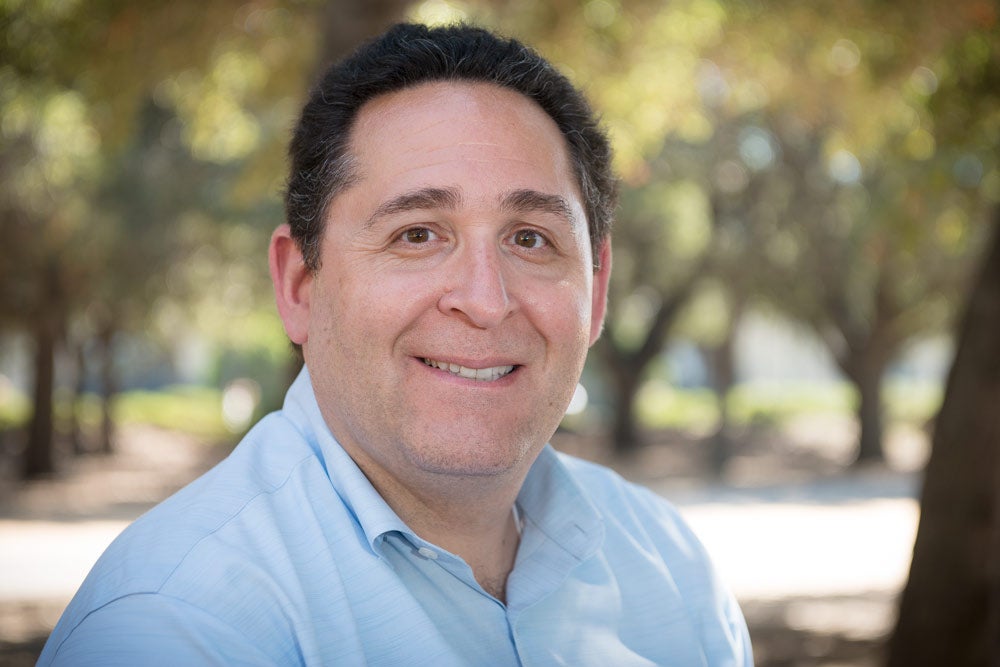Good news, bad news about parking on campus
Q&A with Brian Shaw, director of Parking & Transportation Services.

Brian Shaw, director of Parking & Transportation Services at Stanford, says those who drive alone to campus may want to consider trying alternative commuting programs. (Image credit: L.A. Cicero)
The good news is that more parking will soon become available on campus, says Brian Shaw, director of Parking & Transportation Services. The bad news is that construction and the campus population growth will continue to make parking a challenge. Thus, those who drive alone to work may want to consider trying alternative commuting programs. Stanford Report talked to Shaw recently about parking on campus.
Is parking on campus tighter than in the past?
Yes, there are two forces combining to create a lack of parking: The first is the loss of parking spaces due to construction and the second is the growth of population on campus.
It wasn’t designed to happen this way, especially around Santa Teresa Street, where the new Roble Field parking garage has been delayed. In an ideal situation, the parking garage would have opened before the facilities it was designed to accommodate, including new housing in Lagunita, the Science and Engineering Quadrangle and the renovations to Roble Gym. When the garage opens in February, it will relieve some of the pressure.
Are other areas of campus feeling parking pressure?
The Oval and surrounding areas are always challenging. Removing visitor parking has helped, but it is still oversubscribed. There are new facilities in that area, including the Anderson Collection at Stanford University and the McMurtry Building. There is a lot more going on because of the opening of the Arts District.
Escondido Village (EV) is around 75 percent occupied. EV is actually the most underutilized area on campus. That said, certain parts are busier than others. When construction starts on new EV graduate housing, parking will tighten up because we will lose spaces.
Some of the shared C/ES permit designations will convert to ES (Escondido Village resident students) only. This means most commuters parking in EV will likely move to the Knight Management Center Garage, Maples lot, Track House lot and Varsity lot. That will increase parking demand in those areas.
The good news long term is that fewer graduate students are bringing cars to campus. They say they prefer not to have the expense of a car, and many are finding they can do without. The demographics will be changing in EV, and that will be reflected in plans for the new housing and parking.
What does the future hold?
The way I think about campus is that there is this metaphorical bucket, and my job is to keep it from overflowing. The challenge is the growth of the campus population and activities. The top of the bucket is a hole that represents all the traffic demand management (TDM) programs we have: Caltrain Go Passes, the Commute Club, the Marguerite shuttles, carpools, bike programs and so on. These programs keep the bucket from overflowing and the university from exceeding the commute cap negotiated under the General Use Permit with Santa Clara County. But are the TDM programs enough to keep the bucket from spilling? We are in equilibrium right now. Whether or not that equilibrium continues depends on campus growth, development and the transportation choices of our commuters and residents.
What we want to do is get more people here in the same amount of vehicles. Less would be great. But certainly not more. That requires people to take transit, carpools, vanpools, bike and walk as much as they can and as often as they can. In the future, we will see more removal of surface parking and more expansion of pedestrian zones. Sustainable commuting will be increasingly important to make this work.
What do you recommend to people having trouble finding parking?
For those who must drive, Stanford takes a market-based approach to the parking permit system. Since the most convenient spaces are in higher demand than more distant spaces, our permit system and rates reflect this. Commuters who want the closest spaces or who arrive later may want to purchase an A permit.
We realize this option may not work for everyone, but if commuters are able to use a sustainable alternative even once or twice a week, it could reduce the stress and expense of driving and parking.
The Commute Club is great. If you are eligible, we will pay you up to $300 to not drive alone to campus. Plus, there are other benefits, like Zipcar car sharing credits and the Emergency Ride Home program. In fact, we have more Zipcars on campus than any other university in the world. So we make it easy, economical and convenient to get a vehicle when you need it. The whole package of TDM programs we do is pretty remarkable and comprehensive.
But the bottom-line question you have to answer is whether you want to continue to pay to drive and park, or do you want to do something that is good for the environment, good for the university, good for your pocketbook and good for your health. Traffic in this region is horrible; it is the second worst in the country to Los Angeles. That’s not going to get better any time soon.
We’re here to help people try something different from driving by themselves.
For more, visit Parking & Transportation Services.
